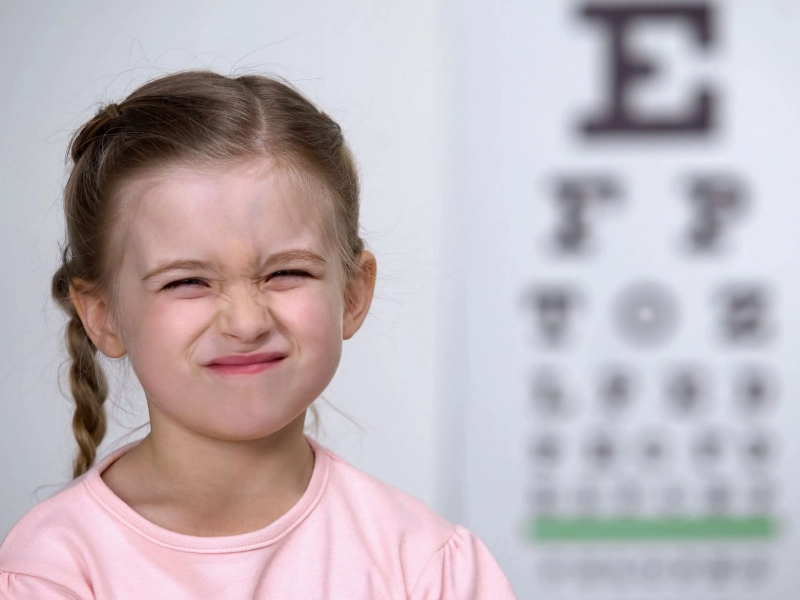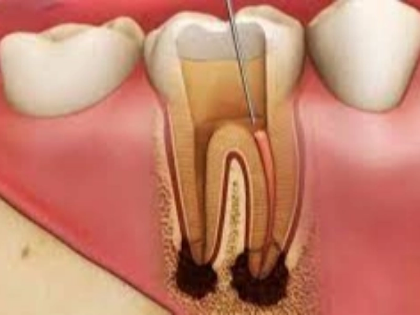How do I know if I am nearsighted or farsighted?
How do I know if my eyesight is farsighted or nearsighted? We recommend that you have a regular eye check every two years. This is free for individuals under the age of 16 and those enrolled in school full time. Myopia, the medical term for nearsightedness, is a common condition that causes distant objects to appear blurry. It is usually detected during childhood and worsens during adolescence. It can be treated with contact lenses or glasses. Adults may also benefit from undergoing lens surgery or laser surgery.
Myopia

Farsightedness
 Hyperopia (farsightedness) occurs when the eyeball is too short to properly focus light on the retina at the back of the eye. As a result, close objects appear blurry. People with mild hyperopia may not realise they have a problem because their eyes eventually adjust, but if you frequently squint or rub your eyes after reading or other close tasks, or complain of headaches or eye strain, you may have hyperopia. It's worth checking out.
In more extreme cases, it can cause difficulty in perceiving distant objects clearly. It is very common and is usually inherited from parents, but some children can develop it throughout childhood. If you are worried about your child's eyesight, enquire about a free screening test at your child and family health service, or your local optician. They can suggest treatment for your child if necessary, or give you advice on glasses or contact lenses. You can also get a recommendation from an ophthalmologist or optometrist if you are concerned.
Hyperopia (farsightedness) occurs when the eyeball is too short to properly focus light on the retina at the back of the eye. As a result, close objects appear blurry. People with mild hyperopia may not realise they have a problem because their eyes eventually adjust, but if you frequently squint or rub your eyes after reading or other close tasks, or complain of headaches or eye strain, you may have hyperopia. It's worth checking out.
In more extreme cases, it can cause difficulty in perceiving distant objects clearly. It is very common and is usually inherited from parents, but some children can develop it throughout childhood. If you are worried about your child's eyesight, enquire about a free screening test at your child and family health service, or your local optician. They can suggest treatment for your child if necessary, or give you advice on glasses or contact lenses. You can also get a recommendation from an ophthalmologist or optometrist if you are concerned.
diagnosis
 You or your child should have regular eye tests at least every two years unless your optometrist tells you otherwise. You may be given medicine to dilate your pupils during the test, or asked to look at letters on a chart. An eye exam usually takes less than 15 minutes.
People with myopia usually cannot see distant objects clearly and may see nearby objects as blurry. This is because the eyes relax their focus only when looking at distant objects, so they have a hard time focusing on nearby objects. This can cause headaches and eye strain. Young people often squint their eyes in an attempt to improve their vision, especially when using phones or reading books.
When there is an imbalance between the length of the eyeball and the ability of the cornea and the lens to focus light rays onto the retina, this results in farsightedness, also known as hyperopia. If you are unable to "adapt" to the error by reducing your focus while gazing at something far away, your near vision may become blurred and your far vision may become sharp.
You or your child should have regular eye tests at least every two years unless your optometrist tells you otherwise. You may be given medicine to dilate your pupils during the test, or asked to look at letters on a chart. An eye exam usually takes less than 15 minutes.
People with myopia usually cannot see distant objects clearly and may see nearby objects as blurry. This is because the eyes relax their focus only when looking at distant objects, so they have a hard time focusing on nearby objects. This can cause headaches and eye strain. Young people often squint their eyes in an attempt to improve their vision, especially when using phones or reading books.
When there is an imbalance between the length of the eyeball and the ability of the cornea and the lens to focus light rays onto the retina, this results in farsightedness, also known as hyperopia. If you are unable to "adapt" to the error by reducing your focus while gazing at something far away, your near vision may become blurred and your far vision may become sharp.
process
 To clearly perceive distant objects, the focusing muscles of the eye need to relax. These muscles have to work harder to see things up close, which can lead to blurred vision. Hyperopia, another name for farsightedness, is a condition in which light is focused behind the retina instead of directly on it. Aging can cause this disorder, and it usually runs in families.
With myopia, your eyeball is too long or your eye's clear front surface, the cornea, curves too sharply. This causes distant objects to appear blurry in your field of vision, making it hard to read or drive without squinting.
Thankfully, it is easy to correct this refractive error with glasses or contact lenses. Adults can also choose to have laser or lens surgery, but these services are not provided by the NHS. Speak to your optician about these procedures. Everyone is recommended to have regular eye checks, often every 2 years.
To clearly perceive distant objects, the focusing muscles of the eye need to relax. These muscles have to work harder to see things up close, which can lead to blurred vision. Hyperopia, another name for farsightedness, is a condition in which light is focused behind the retina instead of directly on it. Aging can cause this disorder, and it usually runs in families.
With myopia, your eyeball is too long or your eye's clear front surface, the cornea, curves too sharply. This causes distant objects to appear blurry in your field of vision, making it hard to read or drive without squinting.
Thankfully, it is easy to correct this refractive error with glasses or contact lenses. Adults can also choose to have laser or lens surgery, but these services are not provided by the NHS. Speak to your optician about these procedures. Everyone is recommended to have regular eye checks, often every 2 years.













